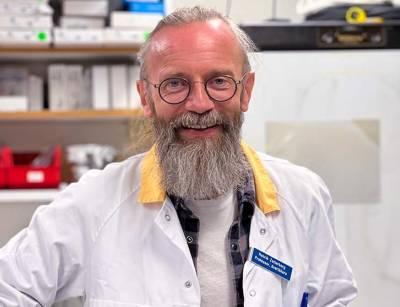Abstract
Brain Commun. 2024 Dec 16;7(1):fcae452. doi: 10.1093/braincomms/fcae452. eCollection 2025.
ABSTRACT
Delirium is a neuropsychiatric syndrome commonly presenting during acute illness. The pathophysiology of delirium is unknown, but neuroinflammation is suggested to play a role. In this cross-sectional study, we aimed to investigate whether cell-free DNA and markers of neutrophil extracellular traps in serum and CSF were associated with delirium and neuronal damage, assessed by neurofilament light chain. Hip fracture patients (n = 491) with a median (25, 75 percentiles) age of 83 (74, 88) years and 69% females were enrolled at Oslo University Hospital, Diakonhjemmet Hospital, Akershus University Hospital and Bærum Hospital. Delirium was assessed daily, pre- and postoperatively. Cognitively healthy adults (n = 32) with a median (25, 75 percentiles) age of 75 (70, 77) years and 53% females were included as controls. Cell-free DNA was measured by using the fluorescent nucleic acid stain Quant-iT PicoGreen® in serum and CSF. Myeloperoxidase-DNA and citrullinated histone H3 were analysed by enzyme-linked immunosorbent assay in serum. Hip fracture patients have significantly higher levels of cell-free DNA and neutrophil extracellular traps in blood than cognitively healthy controls. In hip fracture patients without dementia, cell-free DNA in CSF and serum was significantly higher in patients with (n = 68) versus without (n = 221) delirium after adjusting for age and sex (70 (59, 84) versus 62 (53, 77) ng/ml, P = 0.037) and 601 (504, 684) versus 508 (458, 572) ng/ml, P = 0.007, respectively). In the total hip fracture cohort, CSF levels of cell-free DNA and neurofilament light chain were significantly correlated after adjusting for age and sex (r = 0.441, P < 0.001). The correlation was stronger in those with delirium (r = 0.468, P < 0.001) and strongest in delirious patients without dementia (r = 0.765, P = 0.045). In delirious patients without dementia, significantly higher levels of cell-free DNA in CSF and serum were shown. The association between cell-free DNA and neurofilament light chain suggest simultaneous release of cell-free DNA and neuronal damage during delirium.
PMID:39737468 | PMC:PMC11683831 | DOI:10.1093/braincomms/fcae452
UK DRI Authors
